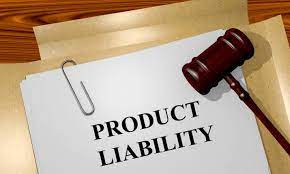What Is a Product Liability Dispute? Understanding Your Rights and Responsibilities
Introduction to Product Liability Law
Product liability disputes can arise when a consumer believes they have been harmed by a defective or dangerous product. In such cases, legal actions can be taken against the manufacturers, distributors, or retailers responsible for the product. Product liability laws exist to protect consumers and ensure that manufacturers are held accountable for the safety of their products.
When a product causes injury or damage, the injured party may seek compensation for medical expenses, lost wages, pain, and suffering, or other damages resulting from the incident. However, navigating the complex landscape of product liability law requires a clear understanding of the different types of disputes and the legal standards associated with them.
Types of Product Liability Disputes
Product liability disputes generally fall into three main categories:
- Manufacturing Defects: These disputes arise when a product is flawed due to an error in its manufacturing process, making it different from the intended design. Examples include a bicycle with a defective brake system or a pharmaceutical product contaminated during production.
- Design Defects: In cases of design defects, the entire line of products is inherently dangerous or defective, even if manufactured correctly. The flaw is present in the product's design itself. For instance, a car model with a faulty airbag system or a ladder with inadequate stability would be considered design defects.
- Failure to Provide Adequate Warnings or Instructions: Manufacturers have a responsibility to provide clear instructions and warnings about the proper use of their products. Failure to do so can lead to liability if a consumer is injured while using the product in a reasonably foreseeable manner.
Legal Standards and Citations
Product liability law varies by jurisdiction, but there are common legal standards used to determine liability. Here are a few citations that demonstrate these standards:
- Strict Liability: Under the principle of strict liability, a manufacturer can be held responsible for injuries caused by their product, regardless of fault or negligence. This standard focuses on the dangerous condition of the product itself and the harm it causes. (Citation: Restatement (Second) of Torts § 402A)
- Negligence: Negligence occurs when a manufacturer fails to exercise reasonable care in the design, manufacture, or distribution of a product. To establish negligence, the injured party must prove that the manufacturer breached its duty of care and that the breach caused the injury. (Citation: Restatement (Third) of Torts: Products Liability)
- Breach of Warranty: When a product fails to meet the warranties made by the manufacturer or seller, a breach of warranty claim can be pursued. Warranties can be express (explicitly stated) or implied (inferred by law). (Citation: Uniform Commercial Code § 2-313, § 2-314)
Steps in Resolving a Product Liability Dispute
Resolving a product liability dispute can involve various steps, including:
- Gathering evidence: Collect all relevant documentation, such as medical records, product receipts, and any available photographs or videos.
- Consulting an attorney: Seek legal advice from an experienced product liability attorney who can guide you through the process and assess the strength of your case.
- Filing a claim: Your attorney will help you file a claim against the responsible parties, whether it is the manufacturer, distributor, or retailer.
- Negotiation and settlement: Parties may engage in negotiations to reach a settlement that compensates the injured party for their damages without going to court.
- Litigation: If a settlement cannot be reached, the case may proceed to trial, where the parties present evidence, and a judge or jury decides the outcome.
External Resources for Further Information
For further information and resources on product liability disputes, you may find the following external links helpful:
U.S. Consumer Product Safety Commission: The CPSC is an independent agency that provides information on product recalls, safety standards, and consumer safety tips.
American Bar Association - Product Liability Law: This section of the American Bar Association's website offers valuable insights into product liability law, including articles, publications, and upcoming events.
FindLaw - Product Liability Basics: FindLaw provides a comprehensive overview of product liability law, including relevant statutes, case examples, and frequently asked questions.
Remember, if you believe you have a product liability dispute, consulting with a qualified attorney who specializes in product liability is crucial to understanding your rights and pursuing appropriate legal action.




Post a Comment
0 Comments